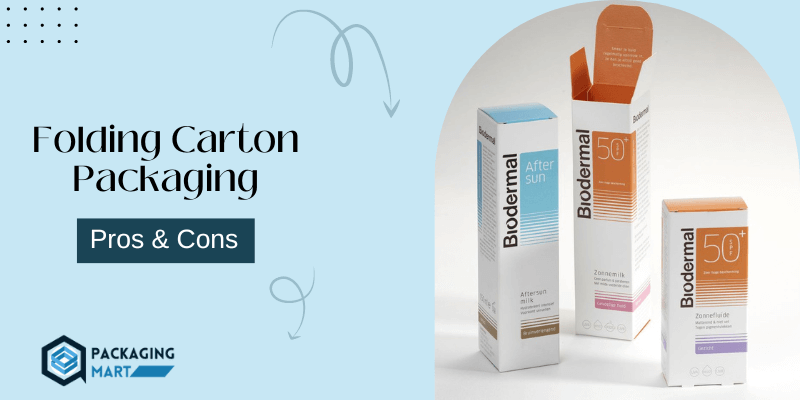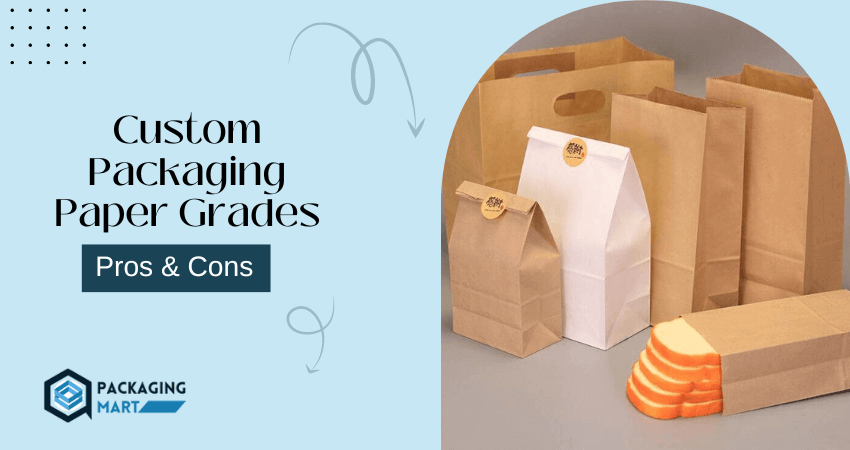Are you looking to create unique and eye-catching packaging boxes that make your product stand out? You’ve come to the right place! Making your packaging box at home is a great way to add a personal touch, save money and be creative!
In this blog post, we’ll provide step by step instructions on how to easily make your custom packaging boxes. Plus, we’ll give you all the tips, tricks and information you need to make your beautiful packaging box from scratch.
So keep reading if you’re ready for an exciting new project because it’s time to get creative!
What did you need to make your own packaging box?
Making your own packaging boxes at home is a great way to save money and create something unique. You will need the following items:
- Cardboard: You can use either thick corrugated cardboard or thin cardstock for your boxes.
- Tape: Packing tape, masking tape or even duct tape will work for assembling the box.
- Scissors: You’ll need scissors to cut the cardboard into the right shape for your box.
- Pen or Pencil: You can use a pen or pencil to mark and measure where you need to make cuts in the cardboard.
- Ruler: A ruler will help you measure accurately and draw straight lines.
- Box cutter: A box cutter is a great tool to help you make precise cuts in your cardboard.
- Optional Extras: Decorative paper, labels or other decorations can be used to make your boxes look more attractive. Also, if you’re shipping fragile items, you may want to include some packing material such as bubble wrap or foam peanut.
How to make your own packaging box?
Here’s what you need to know about making a box of your own:
1) Choose your material
Paperboard, cardboard and corrugated cardboard are all popular choices. Depending on the item you’re packaging and how much weight it will bear, choose a material that is strong enough for the job. You can also try using recycled materials if you want a more eco-friendly solution.
2) Design your packaging box
Create a design that is visually appealing and will help make your product stand out from the competition. Make sure that your design is easy to read and understand, as well as eye-catching.
3) Cut out your pieces
Measure how large you would like your box to be and cut the pieces out. You’ll need six pieces in total, two for the top and bottom and four for the sides.
4) Score and fold the pieces
Once you have all of your pieces cut out, score each one where it needs to be folded with a ruler or bone folder. This will make it easier to fold the box together later on.
5) Assemble your box
Once all of the pieces are scored and folded, glue or tape them together to form a complete box. Make sure that all of the edges line up properly to ensure that your box is strong and sturdy.
6) Decorate for a finishing touch
Now that your box is assembled, you can add some color and design to it. Use stickers, markers or paint to decorate the outside of your box to give it a custom look. You can also use die cuts or stamps to make patterns on the surface.
7) Test Your Box
Before shipping out your product, make sure to test the box first. Use some weights or other items to fill the box and check if it can hold its shape without breaking.
How to choose the right material for packaging boxes?
Before selecting materials for your custom packaging boxes, you should consider the item that will be placed inside the box. This can help determine which type of material is best suited for the job.
For example, if you are looking for a lightweight and cost-effective option for packaging smaller items like cosmetics or jewelry, corrugated cardboard may be an ideal choice. However, if you want to package heavier items like auto parts or electronic components, a durable material such as polyethylene may be more suitable.
Additionally, you should also consider other factors such as moisture resistance, durability and cost when selecting the right materials for your custom packaging boxes.
Tips for making the perfect packaging box.
- Choose the Right Material: The material you choose for your packaging boxes can have a huge impact on how it looks and how well it protects its contents. Consider factors like strength, cost, durability and weight when selecting a material for your packaging box.
- Think About Size: A great packaging box should fit its contents like a glove. Make sure that the size of your box is not too small or too big for its contents.
- Include Branding Elements: Packaging boxes are an excellent opportunity to showcase your brand’s identity. Consider adding unique branding elements like logo, design, colors and texture to make it stand out from the crowd.
- Use Quality Seals: Quality seals such as tamper-resistant tapes and holographic labels can help identify original packaging and protect against counterfeiting.
- Ensure Quality of Printing: The printing quality of your box is just as important as its design. Make sure that the printing is crisp and clear, with accurate colors and no smudges.
- Include Relevant Information: Include relevant information such as instructions for use, product details, ingredients and expiration dates on the packaging box. This will provide customers with everything they need to know about the product.
I hope these tips help you create the perfect packaging box for your product! Good luck!
How to save money on your packaging boxes?
Rather than buying expensive custom packaging boxes, you can look for ways to reduce the cost.
Here are some tips that you can use to save money on purchasing custom packaging boxes:
- Buying in bulk: Bulk orders allow you to save money on your custom packaging boxes by taking advantage of discounts for large orders.
- Shop around for the best deal: Compare prices from different vendors so that you can find the one that offers the most value for your money.
- Look for coupons and discounts: Take advantage of sales, discounts and coupon codes when ordering your custom packaging boxes to help you save money.
- Use eco-friendly materials: Using recycled or sustainable materials can help you reduce the cost of your custom packaging boxes while also being good for the environment.
- Reuse existing boxes: If you already have boxes lying around, why not reuse them? This can save you money and help reduce waste.
- Order in advance: Planning can save you money on your custom packaging box orders. If you have time, consider ordering weeks or even months ahead to take advantage of lower prices.
- Work with a package designer: If you’re looking for ideas on how to reduce the cost of your custom packaging boxes, consider working with a package design specialist who can provide guidance and advice.
By following these tips, you can save money on your custom packaging box.
Alternatives to using a custom packaging box
If you’re looking for alternatives to using a custom packaging box, there are several options available.
- Use padded envelopes: Padded envelopes provide additional cushioning and protection for your items while they’re in transit, plus they come in a variety of sizes that can accommodate different products.
- Use bubble mailers: Bubble mailers are lightweight and can protect items from dust, dirt and moisture while they’re being transported.
- Use poly mailers: Poly mailers are another great alternative to a custom packaging box. Poly mailers are more durable than padded envelopes or bubble mailers and provide excellent protection for fragile items. Many poly mailers come with tear-resistant features and resealable closures for added security.
No matter what type of packaging you choose, make sure that it is properly sealed to keep your products safe.
FAQs – How to make packaging box?
Is it cheaper to make your own boxes?
Making your own boxes from scratch can be quite cost-effective. Depending on the size and materials you need, you may be able to save money on bulk orders of cardboard or other materials.
Additionally, if you have access to a die-cut machine or laser cutter, you can significantly reduce labor costs associated with creating custom boxes. Ultimately, it is up to you to decide if DIY box creation is the right option for your needs.
What materials can you use to make a box?
Many materials can be used to make a box, such as cardboard, wood, metal, plastic, foam board and even paper. Cardboard boxes are popular choices because they’re lightweight yet strong enough to protect the items inside.
Wood is also a popular choice for making boxes as it adds an element of style, while metal and plastic boxes provide a more durable option. Foam board is used for crafting projects and paper boxes are perfect for gifting small items.
Why are cardboard boxes so expensive?
Cardboard boxes can be expensive due to the cost of materials, production processes and shipping. Cardboard is made from wood pulp, which is costly due to the labor involved in harvesting and processing it.
In addition, cardboard boxes must be produced with a variety of machines that require precision manufacturing techniques all of which add up to higher costs. Furthermore, shipping cardboard boxes to a customer can add up due to the weight and size of the packages.
Overall, cardboard boxes may appear expensive when considering all of the materials and processes involved in their production and delivery. However, they are a great choice for protecting items during transport and provide an effective solution when it comes to packaging goods.
What paper is used for packaging boxes?
The most commonly used paper for packaging boxes is corrugated cardboard. Corrugated cardboard is a lightweight, durable material that provides great protection and insulation for products inside the box. It is also easy to print on, making it an ideal choice for custom packaging applications.
Additionally, corrugated cardboard is cheaper than other materials such as plastic and wood, making it a cost-effective option for packaging needs. Corrugated cardboard is also recyclable and biodegradable, making it an environmentally friendly choice.
Consequence
You can make your own packaging boxes with the help of some materials and simple tools. The process is easy and does not require any special skills. With a little bit of effort, you can create beautiful packaging boxes that will protect your products from damage.
By designing and creating high-quality packaging, you can ensure that your product will stand out from the competition. Follow these simple steps and you’ll be on your way to creating eye-catching packaging that will help boost sales and attract new customers.


